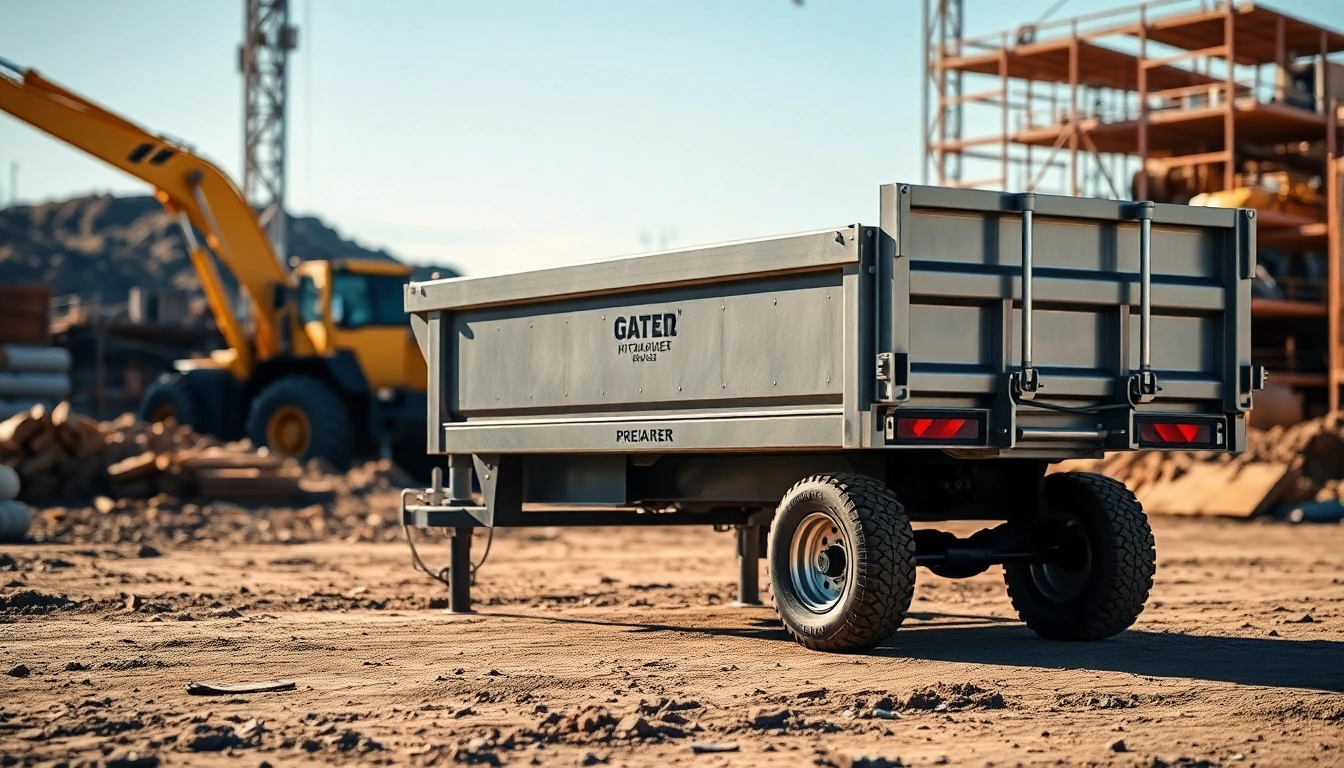Understanding Geosteering Principles
Defining Geosteering and Its Importance
Geosteering is an advanced method employed in the oil and gas sectors, crucial for optimizing drilling processes and ensuring the effective placement of wellbores. It encompasses the real-time assessment and adjustment of geological factors to achieve optimal drilling outcomes. As industries face increasing demands for efficiency and cost-effectiveness, the importance of geosteering becomes more pronounced. It allows drilling teams to navigate subsurface conditions accurately, minimizing risks and maximizing resource extraction. By employing geosteering techniques, operators can enhance well productivity and reduce non-productive time, making it an indispensable part of modern drilling operations.
Key Technologies in Geosteering
The successful implementation of geosteering relies heavily on cutting-edge technologies. Key technologies include:
- Measurement While Drilling (MWD): This technology is vital for obtaining real-time data about the geological formation. It allows operators to adjust the drill path on-the-fly.
- Logging While Drilling (LWD): Similar to MWD, LWD provides real-time measurements of downhole conditions, including formation resistivity, density, and porosity.
- 3D Seismic Imaging: This technique uses seismic data to create detailed images of subsurface geology, aiding in accurate wellbore placement.
- Geographic Information Systems (GIS): GIS integrates various data types, allowing for better visualization and analysis of geological conditions.
These technologies collectively enhance the precision of geosteering, enabling drillers to make informed decisions and optimize their operations.
The Role of Data in Geosteering
The utilization of data in geosteering cannot be overstated. Data-driven decision-making facilitates:
- Real-time Analysis: Data allows teams to analyze drilling conditions instantaneously, leading to immediate adjustments in the drilling trajectory.
- Predictive Modeling: Historical data can be analyzed to predict geological conditions, helping teams to prepare for potential challenges.
- Performance Metrics: Collecting and analyzing data on drilling performance helps in assessing efficiency and identifying areas for improvement.
Access to robust data streams is paramount, empowering drilling teams to navigate complexities and make data-informed decisions effectively.
Geosteering Techniques and Methodologies
Real-Time Measurements and Adjustments
In geosteering, real-time measurements are crucial for maintaining the drilling trajectory within target zones. Continuous monitoring of the drilling parameters enables quick adjustments, ensuring precision. This involves using real-time data from MWD and LWD systems, which deliver essential geological and operational data, allowing geologists and engineers to make immediate decisions.
Techniques such as automated steering mechanisms also play a significant role in this process. By leveraging algorithms, these systems can autonomously adjust the drill bit’s position based on real-time feedback from drilling operations.
Best Practices for Effective Geosteering
Implementing best practices in geosteering enhances operational efficiency and drilling accuracy. These practices include:
- Pre-drill Planning: Conduct extensive geological assessments before drilling starts, using seismic data and historical drilling information to plan the trajectory effectively.
- Interdisciplinary Collaboration: Foster collaboration among geologists, engineers, and drilling personnel to promote information sharing and informed decision-making.
- Optimizing Technology Use: Utilize the latest technologies and tools available for real-time monitoring and data analysis to enhance precision and reduce non-productive time.
- Regular Training: Continuously train personnel on the latest geosteering techniques and technologies to ensure a skilled workforce capable of adapting to evolving challenges.
Common Challenges and Solutions
Despite the advantages of geosteering, various challenges may arise:
- Data Overload: With the influx of real-time data, teams may struggle to process and interpret information effectively. Implementing data management systems can mitigate this issue.
- Geological Uncertainty: Unforeseen geological conditions may disrupt drilling plans. Adopting flexible drilling strategies and contingency plans can help address these uncertainties.
- Equipment Malfunctions: Technical failures can lead to delays and increased costs. Regular maintenance and performance audits of equipment can minimize this risk.
Addressing these challenges with thoughtful strategies ensures that geosteering remains a powerful tool for drilling operations.
Implementing Geosteering in Drilling Operations
Steps to Incorporate Geosteering Technology
Integrating geosteering technology into drilling operations requires a systematic approach:
- Assessment of Geological Potential: Begin by evaluating the geological features and potential drilling locations to identify suitable targets.
- Selection of Technologies: Choose appropriate technology tools based on the specific requirements of the drilling project, considering factors such as depth and geological complexity.
- Training and Onboarding: Equip the team with essential training to familiarize them with geosteering practices and tools, ensuring they understand how to operate equipment and interpret data.
- Pilot Testing: Conduct pilot projects to test the geosteering approach and make necessary adjustments before full-scale implementation.
- Continuous Evaluation: Establish metrics for success and continuously evaluate the impact of geosteering on drilling outcomes, implementing improvements as required.
Training Teams for Geosteering Success
Successful geosteering operations depend on well-trained teams. Training programs should cover:
- Technical Skills: Equip team members with knowledge of drilling technologies, data interpretation, and geoscience fundamentals.
- Safety Protocols: Ensure that all personnel understand safety protocols associated with drilling and geosteering to prevent accidents and injuries.
- Field Simulations: Use field simulations to provide hands-on experience in geosteering operations, allowing teams to practice real-time decision-making in a controlled environment.
This comprehensive training boosts confidence and efficiency on-site and improves the overall outcomes of drilling projects.
Evaluating the Impact of Geosteering
To assess the efficacy of geosteering, it is vital to analyze performance metrics, such as:
- Successful Well Placement: Measure the accuracy of well placements versus projected targets to quantify geosteering effectiveness.
- Time Savings: Compare the duration of drilling operations with and without geosteering techniques to identify reductions in non-productive time.
- Cost Efficiency: Evaluate cost savings resulting from improved drilling accuracy and reduced resource wastage.
By carefully analyzing these metrics, companies can determine the overall impact of geosteering and refine their methodologies for continuous improvement.
Case Studies and Success Stories
Notable Geosteering Projects
Geosteering has been implemented successfully across various projects, showcasing its value. For instance, projects that utilized a combination of predictive modeling and real-time data have yielded remarkable results, including optimal reservoir contact and significant productivity increases. These positive outcomes highlight the effectiveness of integrating geosteering into drilling operations.
Lessons Learned from Geosteering Applications
Throughout the implementation of geosteering techniques, several lessons can be gleaned:
- Embrace Innovation: The integration of new technologies should be continuous, staying ahead of industry developments.
- Collaboration is Key: Successful projects often stem from effective communication between all team members involved in drilling operations.
- Flexibility and Adaptability: The ability to adapt to changing geological conditions is crucial, emphasizing the need for a non-static approach to geosteering.
Comparative Analysis of Geosteering Approaches
Different geosteering methodologies can vary significantly in implementation. A comparative analysis reveals that while traditional geosteering relies heavily on historical data and manual adjustments, modern techniques leverage automation and advanced software tools for real-time decision-making. Choosing the right approach depends on the specific operational context and the desired outcomes.
The Future of Geosteering
Emerging Trends in Geosteering Technology
The landscape of geosteering is constantly evolving. Emerging trends in technology, such as machine learning and artificial intelligence, are set to transform how geosteering is conducted. These advancements promise to enhance data analytics, automate processes, and improve predictive capabilities, ultimately leading to more efficient drilling operations.
Environmental Considerations in Geosteering
As environmental concerns grow, geosteering practices are becoming more aligned with sustainability goals. Geosteering technologies can help minimize the environmental impact of drilling operations by reducing the extent of surface disturbance and optimizing resource extraction. Understanding geological formations in detail enables companies to operate with greater respect for the ecosystem.
Preparing for Next-Generation Geosteering Solutions
To prepare for the next generation of geosteering solutions, companies should focus on investing in research and development. This includes fostering partnerships with technology providers, stakeholders, and academia to unlock the full potential of geosteering technology. By embracing innovation and staying adaptable, organizations can position themselves at the forefront of the industry and capitalize on the benefits of advanced drilling techniques.
To further explore how geosteering can transform drilling operations and drive resource efficiency, consider visiting www.geosteeringvision.com. Collaborative efforts and a proactive approach could unlock significant improvements in your operational strategies.



